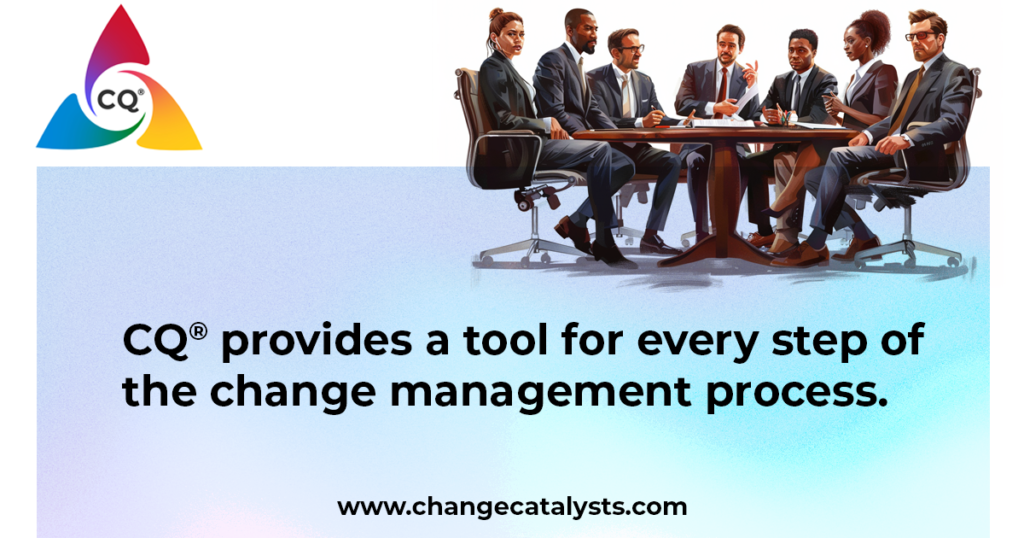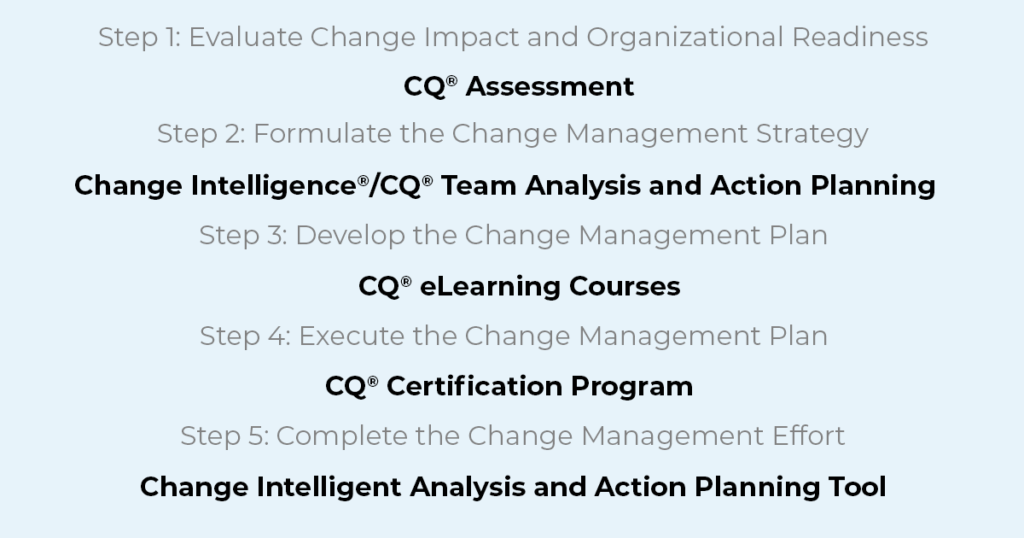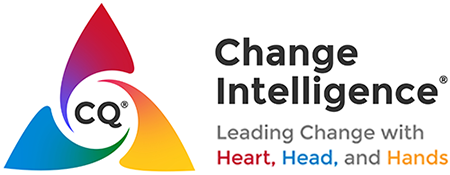In today’s rapidly evolving business landscape, enhancing organizational change capability is not just beneficial; it’s essential for survival. Organizations that excel in leading change can navigate the complexities of market fluctuations, technological advancements, and evolving customer expectations more effectively.
Your organization may already have a change management playbook but still struggles to obtain ROI from initiatives and experiences stress, burnout, and change fatigue. What we’ve found is that CM methodologies are important, but baseline tools are not. What’s missing is the capability to not just “manage,” but to truly “lead” change. As I described more fully in my previous blog post, that’s the gap that Change Intelligence®/CQ® is intended to close.

But how specifically can Change Intelligence® help? This blog post provides a practical, step-by-step guide to how you can use one simple but powerful tool in the CQ® System at each phase of the Association for Change Management Professionals’ Standard for Change Management process to bolster your organization’s ability to accelerate change.
Step 1: Evaluate Change Impact and Organizational Readiness
Start by evaluating your organization’s current capability to handle change. This involves understanding the strengths and weaknesses of your existing strategies, systems, and structures. The Change Intelligence®/CQ® Assessment informs this process, by providing insights into your leaders’ (and people at all levels) preferences and tendencies in adapting to and leading change initiatives.
Step 2: Formulate the Change Management Strategy
Leadership is crucial in strategically driving any change initiative. Ensure that your leadership team is not only skilled in operational management but also in leading change. This includes training leaders to be agile, confident, and capable of motivating their teams through uncertain times. Change Intelligence®/CQ® Team Analysis and Action Planning process diagnoses and develops a team’s collective change capability, resulting in greater collaboration, synergy, and an optimally effective guiding coalition.
Step 3: Develop the Change Management Plan
Leadership teams cannot do it alone; they need to light many fires throughout the organization. Empowering change champions in critical roles ranging from change and project management professionals to HR business partners to communications and training specialists is key to leading change in a way that results in deep and broad commitment, not mere compliance. The CQ® Certification Program equips people to train others, coach key stakeholders, and facilitate teams to achieve meaningful results.
Step 4: Execute the Change Management Plan
We need everyone on board to navigate through the twisting turns of change. Our Change Intelligence® eLearning Courses are scalable solutions to help people at all levels understand their essential role in bringing change to life. The training builds a common language to communicate about the impacts of change, and empowers people to get their vital voices heard not as negative resistors, but rather as positive contributors engaged in inventing the future together.
Step 5: Complete the Change Management Effort
Finally, continuously measure the impact of change initiatives and leverage the learnings to foster growth-oriented mindsets and a culture of continuous improvement. The Change Intelligent Analysis and Action Planning Tool is a structured guide to collect feedback from groups across the organization about what worked, what didn’t, and what could be enhanced in leading Hearts (people, teams, culture), Heads (purpose, strategy, metrics), and Hands (process, resources, training) through change. Since what you see depends on where you sit, this is a powerful process to foster transparent dialogue across levels, bolstering psychological safety and identifying wins to capitalize on and landmines to avoid for the future.

Conclusion
Foster an organizational culture that is receptive to change. This involves promoting values such as flexibility, innovation, and continuous learning. Cultures that view change as an opportunity rather than a threat can adapt more quickly and successfully.
Enhancing your organization’s change capability is a dynamic and ongoing process. By following these steps, you can build a more resilient organization that not only survives but thrives in the face of change. Remember, the ability to adapt to change is a competitive advantage that can differentiate your business in a crowded marketplace.
Take Action Now
Are you ready to enhance your organization’s change capabilities? Start by assessing your current change leadership with our Change Intelligence®/CQ® Assessment. Contact us for a personalized consultation to help develop a tailored strategy that fits your unique needs and challenges. Let us help you turn change into a strategic asset.
